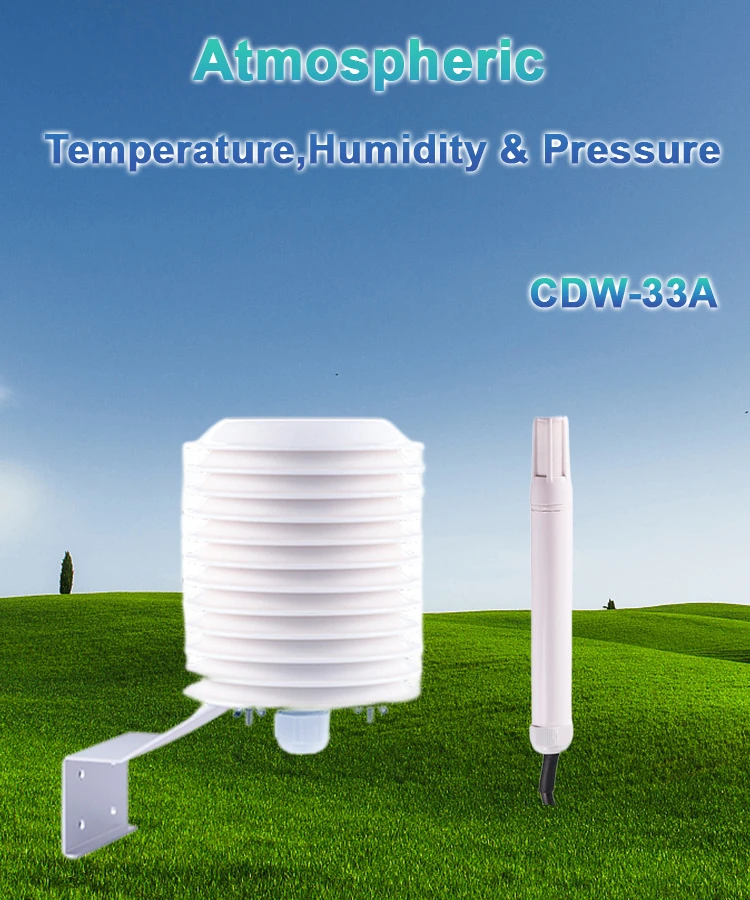How Do Weather Sensors Work?
Weather sensors play a key role in collecting data about the atmosphere. They help us understand and predict weather patterns better. These devices measure important factors like temperature, humidity, wind speed, and rainfall. This information is vital for weather forecasting, aviation, farming, and monitoring the environment.
In this guide, we will look at how weather sensors work and the technology that makes them run.
Types of Weather Sensors
Weather sensors have different designs. Each one is made to measure specific weather variables. Here are some of the most common types of weather sensors:
1. Temperature Sensors
Temperature sensors are important for weather monitoring. They measure the temperature of a locati0n. This data helps meteorologists make accurate forecasts. Most temperature sensors use thermistors or thermocouples.
A thermistor changes its resistance when the temperature changes. A thermocouple produces a voltage based on the temperature difference between its two ends.
2. Humidity Sensors
Humidity sensors, also called hygrometers, measure how much moisture is in the air. This is important for weather conditions.
Common types of humidity sensors are capacitive and resistive. Capacitive sensors measure humidity by detecting changes in electrical capacitance as moisture levels change. Resistive sensors measure changes in electrical resistance caused by moisture absorption.
3. Barometric Pressure Sensors
Barometric pressure sensors, or barometers, measure the pressure of the atmosphere. This data helps predict short-term weather changes and long-term climate trends. Barometric sensors can use different technologies, such as aneroid, mercury, or electronic systems.
Aneroid barometers have a metal disk that changes size with pressure. Mercury barometers measure pressure by looking at the height of a mercury column. Electronic barometers use technology to provide accurate readings.
4. Wind Speed and Direction Sensors
Wind sensors are important for understanding how air moves. They help us see wind patterns for weather forecasts. People often use anemometers to check wind speed.
Anemometers come in different types, such as cup, propeller, and ultrasonic. Wind vanes measure wind direction. These devices have a flat surface that lines up with the wind.
5. Precipitation Sensors
Precipitation sensors measure how much and how hard it rains, snows, or falls in other ways. Two common types of these sensors are tipping bucket rain gauges and optical rain sensors.
Tipping bucket gauges work like a seesaw. They tip when they collect a set amount of water. Optical rain sensors use infrared beams to detect raindrops. They also measure how fast it is raining.
How Weather Sensors Operate
To understand how weather sensors work, we need to look at the principles of different types of sensors and what they do.
1. **Temperature Sensors**
Temperature sensors measure changes in temperature. They use either thermistors or thermocouples. Thermistors are made of materials that change their electrical resistance when the temperature changes.
People turn this change in resistance into an electrical signal for measurement and understanding. In contrast, thermocouples produce a small voltage when there is a temperature difference between their two junctions. This voltage is linked to the temperature difference and can be measured with special circuits.
2. **Humidity Sensors**
Humidity sensors work by measuring how moisture changes the electrical properties of certain materials. Capacitive humidity sensors have a layer that absorbs moisture between two conductive plates.
As this layer takes in moisture, its dielectric constant changes. This alters the capacitance between the plates. The change is detected and turned into a humidity reading.
Resistive humidity sensors use materials that change their electrical resistance when they take in moisture. This change in resistance is measured and turned into a humidity level.
3. **Barometric Pressure Sensors**
Barometric pressure sensors measure air pressure in different ways. Aneroid barometers have a flexible, sealed chamber. This chamber connects to an indicator that moves when air pressure changes.
As air pressure changes, the chamber either expands or contracts. This causes the indicator to move. Mercury barometers use a column of mercury in a glass tube. The height of the mercury changes with atmospheric pressure.
Modern electronic pressure sensors use methods like piezoresistive, capacitive, or resonant technologies. Piezoresistive sensors have diaphragms with resistors. When the pressure changes, the diaphragm bends.
This bending changes the resistance. People measure this resistance to find the pressure.
Capacitive sensors detect changes in capacitance. This happens when the diaphragm moves due to pressure changes. Resonant pressure sensors use vibrating parts. Their resonant frequencies change when air pressure changes.
4. **Wind Speed and Direction Sensors**
Wind speed is usually measured with anemometers. Cup anemometers have cups that spin on a central axis. The number of spins in a set time shows the wind speed.
Propeller anemometers work in a similar way but use spinning propellers instead of cups. Ultrasonic anemometers send out sound waves to measure wind speed and direction. They analyze changes in travel time and frequency shifts.
Wind direction is measured with vanes. These are flat plates that line up with the airflow. The way the vane points shows the wind’s direction.
5. **Precipitation Sensors**
Tipping bucket rain gauges collect and measure rainfall. They do this by directing water into two buckets under a funnel. When one bucket fills to a certain level, it tips over and empties.
The second bucket then takes its place. People count the bucket tips to calculate the amount of rainfall.
Optical rain sensors use infrared beams to detect rain and measure how heavy it is. They do this by observing how raindrops scatter the beam. Then, they convert this information into readings of precipitation.
**Conclusion**
Weather sensors are essential for gathering and studying weather data. They help predict the weather and understand how the atmosphere works. These devices track temperature, humidity, pressure, wind, and rain. They use advanced technology to make sure the data is accurate and reliable.
This information helps people and groups make good choices about the weather. Next time you check a forecast, remember the advanced systems that make these readings.
